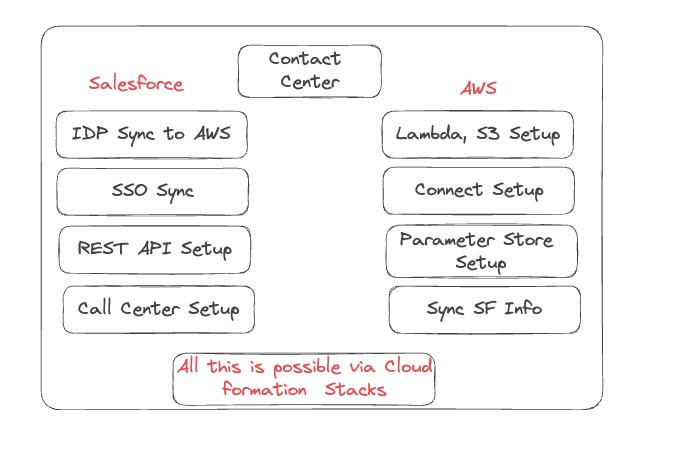Behind the Scenes: Creating a Contact Center in Salesforce
 Rajivkrishnan Jeyaram
Rajivkrishnan JeyaramWelcome back to our Service Cloud Voice blog series! In our previous blog, we delved into the process of setting up an AWS account within Salesforce. Today, we're going to take a closer look behind the scenes at what happens when you create a contact center in Salesforce.
Understanding the Contact Center Concept
Firstly, let's demystify the term "contact center" within Salesforce. While it may sound like a sleek feature with an enhanced user interface, it essentially serves as a centralized hub for managing call center information. Behind the scenes, all the data is stored as call center metadata, which can be accessed using tools like SF CLI or Workbench. It's essential for maintaining consistency and accessibility across various platforms.

Synchronization with AWS Connect
One of the critical functionalities of a Salesforce contact center is its seamless integration with AWS Connect. When a user logs into Salesforce, their status and availability are synchronized with AWS Connect. This synchronization occurs through the concept of Identity Provider (IdP) and Service Provider (SP), commonly known as Single Sign-On (SSO). Salesforce serves as the IdP, while AWS Connect acts as the SP.
Leveraging Salesforce's Built-in Tools
Salesforce provides an inbuilt tool for Amazon Connect, which embeds the Amazon Connect Contact Control Panel (CCP). This tool allows users to make and receive calls directly within the Salesforce platform. Additionally, Salesforce partners utilize the same platform for embedding their telephony systems into the omni-channel experience.
Unified Experience Across Channels
Regardless of the telephony provider used, Salesforce ensures a unified experience across all channels through its omni-channel widget. This widget streamlines interactions and enhances customer experiences by providing a seamless transition between various communication channels.
Automated Provisioning by Salesforce
When creating a new contact center, Salesforce takes care of most of the provisioning tasks. This includes syncing IdP information from Salesforce to AWS, creating Connect instances, setting up Out-Of-the-Box (OOB) lambdas, and configuring Connect to handle voice calls efficiently.
Storage and Deployment
All system and provider information is stored in the parameter store of the System Manager in AWS. This ensures secure storage and easy access to relevant data. Furthermore, AWS CloudFormation is extensively used for deploying and setting up resources required for handling Service Cloud Voice, streamlining the deployment process.
Conclusion
Creating a contact center in Salesforce involves a sophisticated orchestration of various technologies and platforms. From seamless integration with AWS Connect to unified experiences across channels, Salesforce simplifies the process while ensuring efficient functionality and enhanced customer satisfaction.
Stay tuned for our next blog post, where we'll explore more insights and best practices within the Salesforce ecosystem. Until then, happy Salesforce-ing!
Subscribe to my newsletter
Read articles from Rajivkrishnan Jeyaram directly inside your inbox. Subscribe to the newsletter, and don't miss out.
Written by
